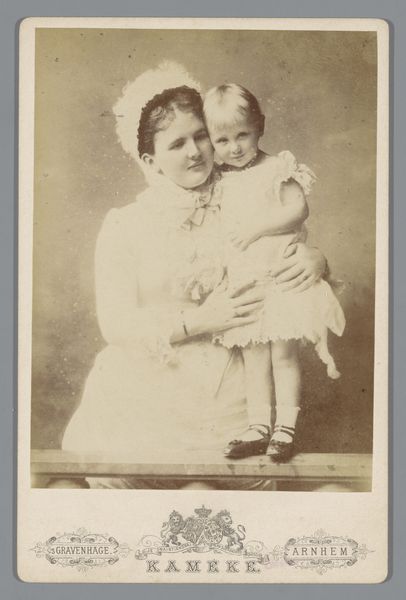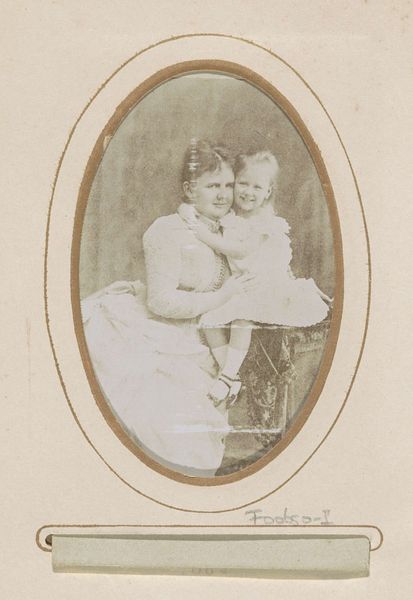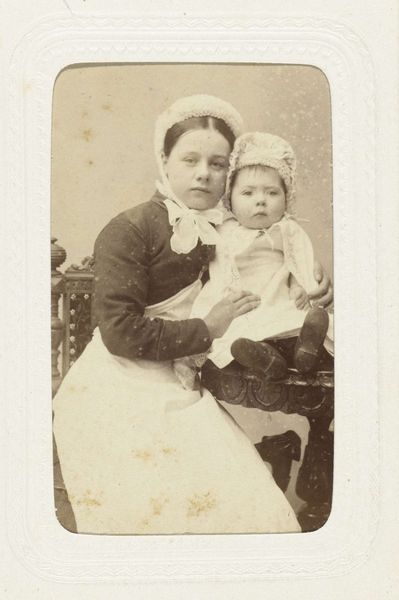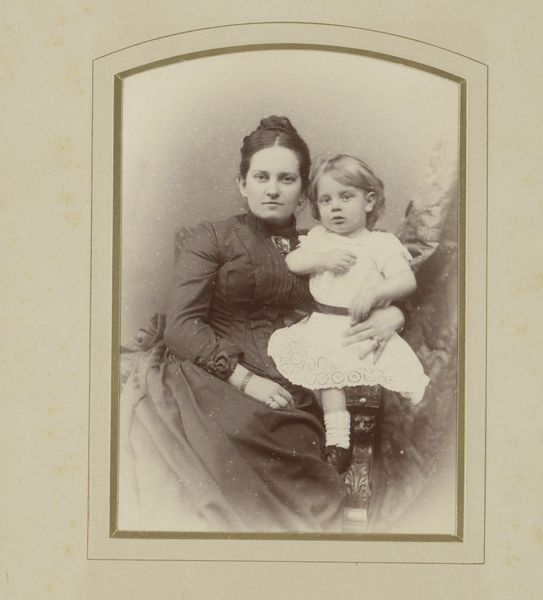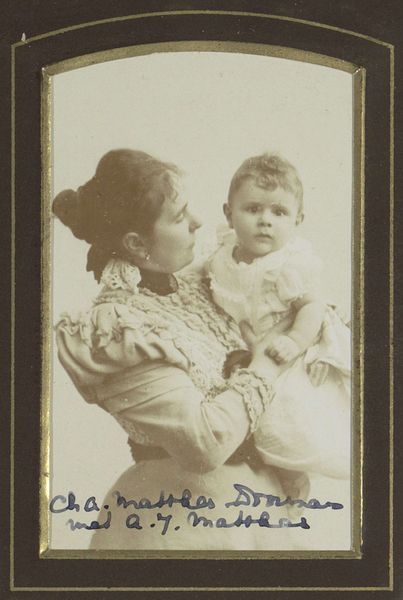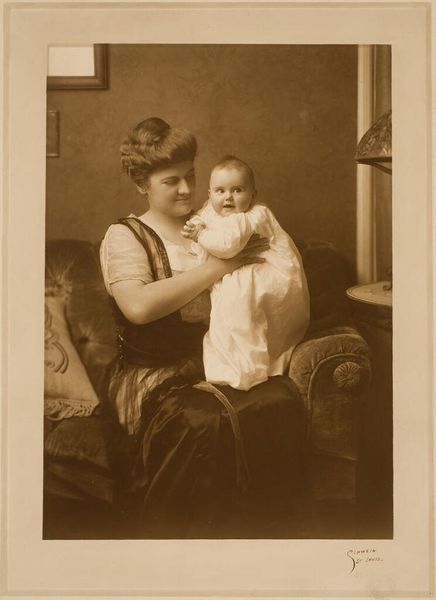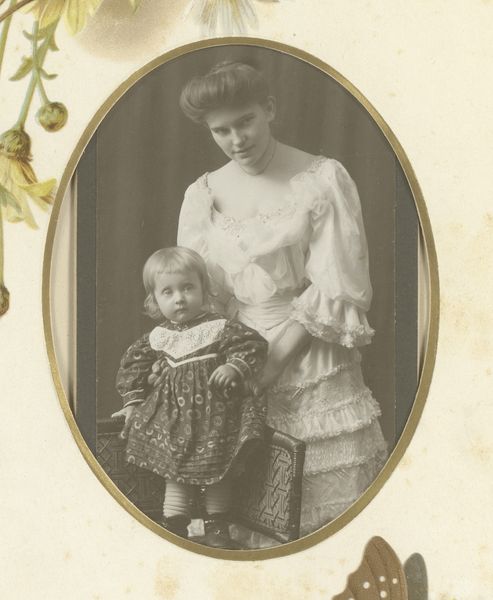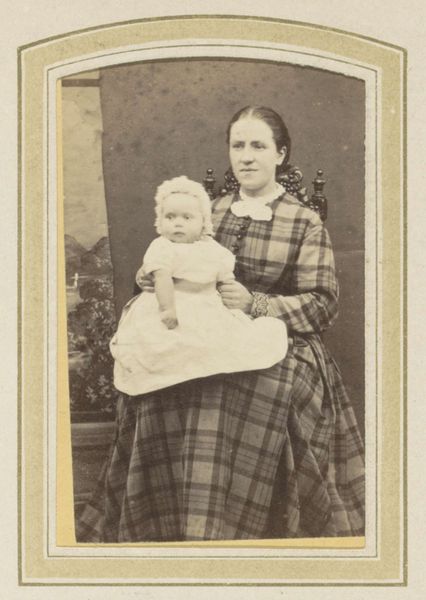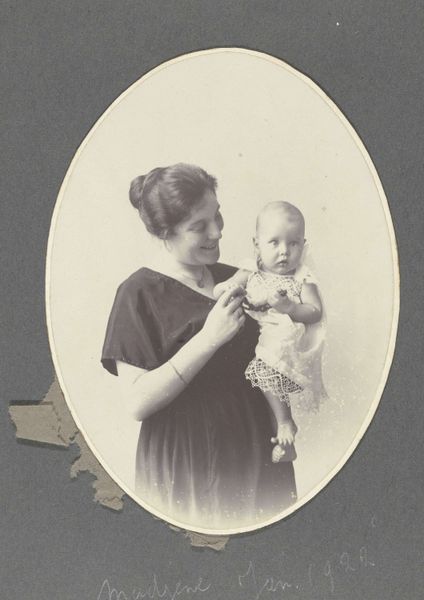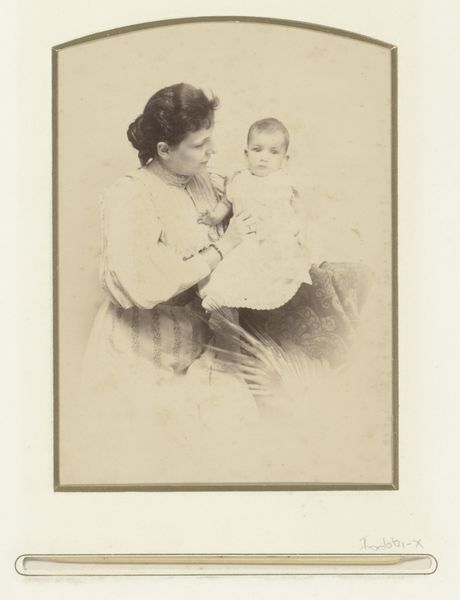
Portret van Emma, koningin-regentes der Nederlanden, en Wilhelmina, koningin der Nederlanden 1882 - 1883
0:00
0:00
photography, albumen-print
#
portrait
#
portrait image
#
dutch-golden-age
#
photography
#
portrait art
#
albumen-print
Dimensions: height 123 mm, width 85 mm
Copyright: Rijks Museum: Open Domain
Curator: Immediately, I notice how much visual weight is given to the details in the gowns. So much ornate lace, and that fluffy headdress Emma is wearing draws the eye. Editor: And it is striking how stiff the subjects are, a formal necessity perhaps, but it makes the child seem unnaturally stoic, even apprehensive. The photographer, Richard Kameke, took this albumen print sometime between 1882 and 1883. It is titled "Portret van Emma, koningin-regentes der Nederlanden, en Wilhelmina, koningin der Nederlanden"—that is, a portrait of Queen Emma and Queen Wilhelmina. Curator: The stiffness also contrasts starkly with the very delicate image we have. Looking at Emma, specifically, her gaze conveys serenity and devotion, practically a symbol of the devoted regency and the weighty expectation surrounding her daughter, Wilhelmina. I think Kameke captures the weight of royal destiny here, almost mythic in presentation. Editor: And there’s the inherent flatness of photography, the restriction of tonal range which actually focuses your eye in on particular textures like the velvet bands around Wilhelmina's footwear, almost amplifying the composition’s structural simplicity. Mother and daughter positioned centrally in the frame, figures parallel, and then softened with lace. What meaning might that signify for you? Curator: Given Wilhelmina’s future role, it suggests themes of lineage, duty, and the formal presentation of power. These are women who both define and are defined by their positions. This carefully crafted representation, which feels more than candid—almost symbolic—ensured that particular visual themes of continuity and the sacral authority, would persist into the early 20th century. Emma as mater dolorosa and protector. Editor: This image becomes a meditation on surface and symbol. As an object, it reveals photographic limitations which play against its social function as propaganda. Curator: Very well stated; the object itself adds an additional layer to its themes. Editor: Agreed. It is something quite striking about how those combined elements create tension between domestic tenderness and the immutable role.
Comments
No comments
Be the first to comment and join the conversation on the ultimate creative platform.
